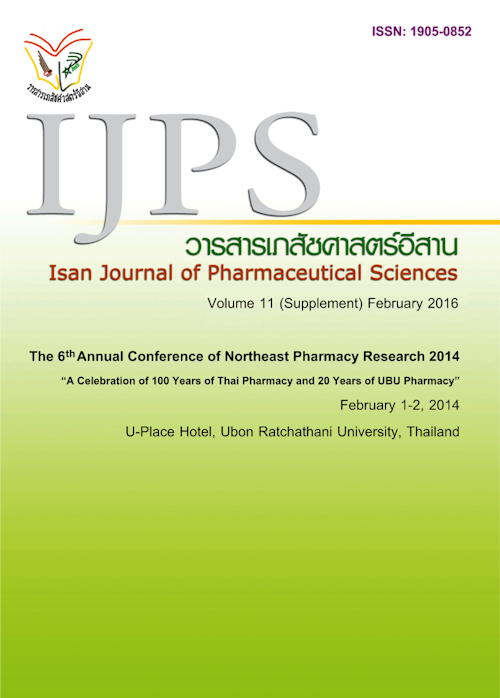The Promotion of Thai Traditional Medicine Policy in Government Hospitals: Myth or Reality
Main Article Content
Abstract
Introduction: The Ministry of public health has implemented several policies to promote Thai traditional medicine (TTM) services in government hospitals for many years, however, the integration of TTM in health care system has not been successful as expectation. There are various activities and quality of services among hospitals. This study aimed to analyze the situation’s problems of TTM services in government hospitals. Materials and Methods: Both qualitative and quantitative methods were used in this study. In-depth interview was used to collect data from the hospital directors, pharmacy department directors, TTM divisions directors or TTM doctors from 15 hospitals. A mail-questionnaire was used to collect data from 139 hospitals. Quantitative data was analyzed by descriptive statistics. The sociological political economy concept was used to frame and analyze all data in this study. Result: TTM services were provided differently among government hospitals. With regard to herbal production, most hospitals have never produced (56.4%) and some no longer produce herbal drugs (16.7%). The discontinuation of the production was due to the change of government policy. For hospitals where production are still active, differences in the number of items, production cost, herbal drug use cost were observed. In most hospital, herbal drugs were prescribed by physicians (97.4%) rather than TTM doctors. Most of prescribed drugs were single ingredient products. The use of traditional dosage form (e.g. honey pill) was found in few hospitals. Most of TTM doctors did not perform diagnosis and prescribed herbal drugs (69.9%) because they are not authorized (25.2%). In addition, the number of herbal drug items in each hospital were inadequate for treatment (24.3%). Medical doctors seldom referred the patients to TTM doctors for further treatment (20.3%). With regard to practice sites, they were inappropriate in many aspects. The majority of the hospitals had problems with the working areas. For example, the production area (69.0%) did not meet good manufacturing practice (GMP). The diagnosis and treatment areas (56.3%) are too small, old and non-private. For manpower, there are high variation in positions and number of staffs, and educational degree. The TTM doctors had confronted with difficulties in promotion and had low income. They are also dictated and obstructed by modern medical professionals who mostly do not have TTM license (93.4%). Conclusion: The differences in performances and slow development of TTM in hospitals reflected and revealed the weakness, myth and unintention of Ministry Public Health and provincial policies. Therefore, development of TTMs should involve equal participation from many healthcare professionals in order to determine and develop TTM policies and to reduce monopoly power of some healthcare profession.
Article Details
In the case that some parts are used by others The author must Confirm that obtaining permission to use some of the original authors. And must attach evidence That the permission has been included
References
Chuengsatiansup K. 2003. Spirituality and Health an intial proposal to incorporate spiritual health in health impact assessment. Journal of environmental Impact Assessment Review 23: 3-15
Lertmanorut S. 2005. Street dentaurists: The state, The dental profession and lllegalization, Case study of a group of street denturist in Bangkok, M.A. thesis in arts (medical and health social sciences) faculty of graduate studies Mahidol university
Pickstone, J. 1990. Medicine, Society and The state. In R. Porter (Ed.), Cambridge Illistrated History Medicine. Cambridge: Cambridge University Press.
Vadhnapijyakul A. 2011. The Status and Development of Traditional Medicine: The Influence of State and Medical profession under Capitalism. Thesis submitted the degree of doctor of philosophy (medical and health social sciences), Faculty of graduate studies Mahidol university.


